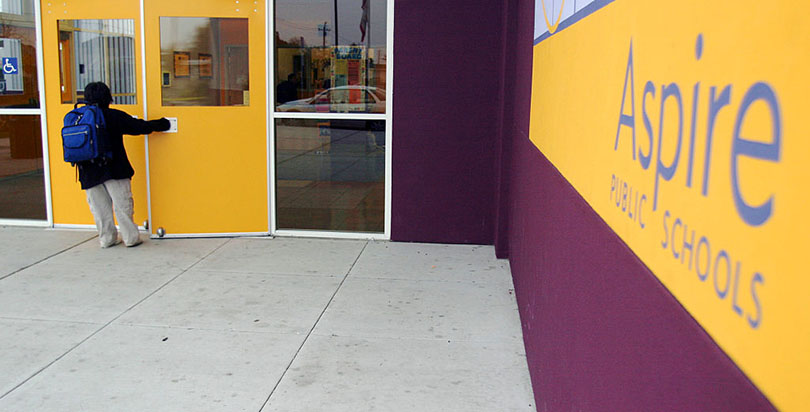Analysis: New Study Shows That Charter Schools Do Not ‘Drain’ Funds From Traditional Public Classrooms. In Fact, in Many States, the Opposite Seems to Be True

Get essential education news and commentary delivered straight to your inbox. Sign up here for The 74’s daily newsletter.
Last fall, Governor Gavin Newsom approved a new state law, Assembly Bill No. 1505, which gave local districts more control over the opening of new charter schools and the renewal of existing schools’ charters. In addition the new law revises the process for appealing rejected charter school applications.
Although it remains to be seen whether this bill will ultimately hinder the growth of charter schools in California, that certainly seemed to be the goal. Yet, a new study commissioned by our organization counters one of the most common criticisms that’s leveled at them: that charter schools “drain” money from traditional public schools.
The study uses enrollment and fiscal data reported by traditional school districts between 2000 and 2017 to analyze the relationship between the proportion of students attending charter schools not approved by the local school district and the finances of host school districts in twenty-one states, including the Golden State.
Perhaps surprisingly, the study finds that host districts’ total revenues per pupil actually increased in most states as the percentage of local students who enrolled in charter schools rose. Certainly, that was the case in California, where a 10 percentage point increase in the percentage of students attending charter schools that were authorized by counties or the State Board of Education (after being rejected by the host district) was associated with a 5 percent increase in host districts’ total revenue per pupil and a 4 percent increase in their instructional spending per pupil.
Importantly, these increases weren’t caused by changes in the types of students host districts enrolled. For example, they weren’t due to increases in the share of district students who were low income, eligible for Special Education, or classified as English language learners (Which are all designations associated with additional per pupil funding under state and federal law).
So why does host districts’ funding increase when kids leave for charter schools that they haven’t approved?
The answer is different for every state. But in California, two factors stand out.
First, charter schools that aren’t authorized by the hosting district are particularly likely to be excluded from local funding sources, leaving the districts in question with fewer students to serve with the same local dollars. For example, many districts issue bonds for facilities but don’t give charter schools a fair share of the funds. And more than one hundred California school districts generate revenues through a “parcel tax,” which typically aren’t shared with charters.
Second, California districts that experience declining enrollment – such as those that experience charter-driven enrollment losses – have the option of using the previous year’s enrollment numbers for the purposes of state funding. So at least initially, host districts are paid for students whom they no longer serve.
It may seem strange to privilege schools that families are leaving over schools where they have chosen to enroll their children, but opponents of school choice have been relentless in seeking to deny funding to vulnerable students whose parents have the audacity to send them to non-district schools.
Despite these policies and efforts, California is home to more charter schools than any other state in the country. It’s also true that urban charter schools continue to outperform their district counterparts – nationally and in California – and some studies have also found that their presence boosts the achievement of students in traditional public schools (which makes sense, if instructional spending is increasing).
In short, expanding California’s charter sector is a win-win proposition. So yes, authorizers in the state should absolutely vet new charter applications – and hold existing schools accountable for their performance during the renewal process. But opponents of charter schools should stop perpetuating the myth that they threaten host district’s finances.
Get stories like these delivered straight to your inbox. Sign up for The 74 Newsletter

;)
